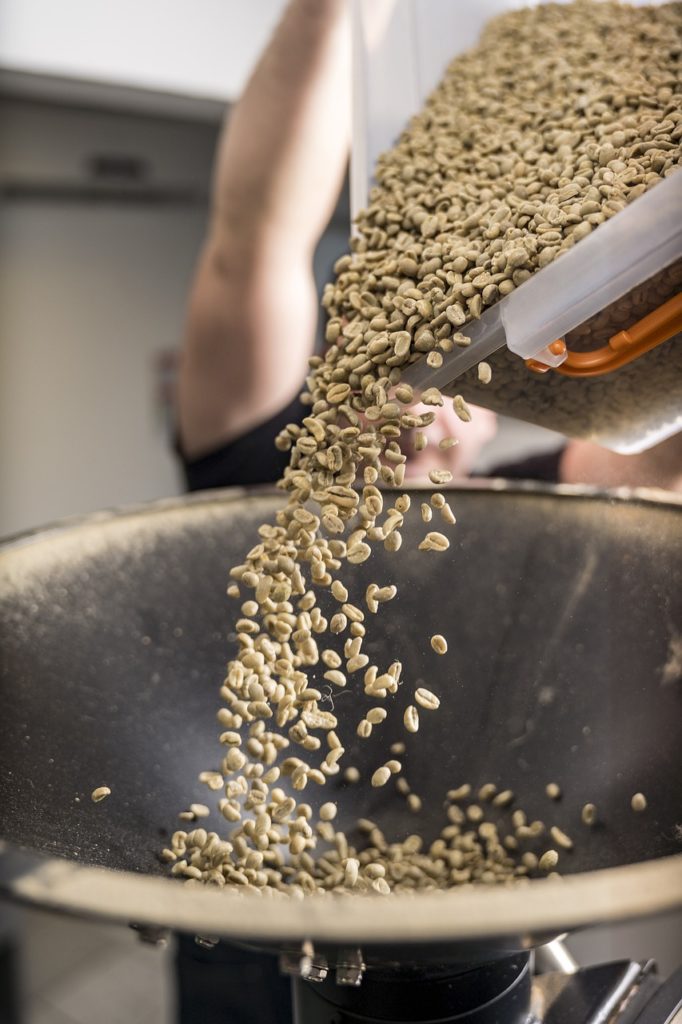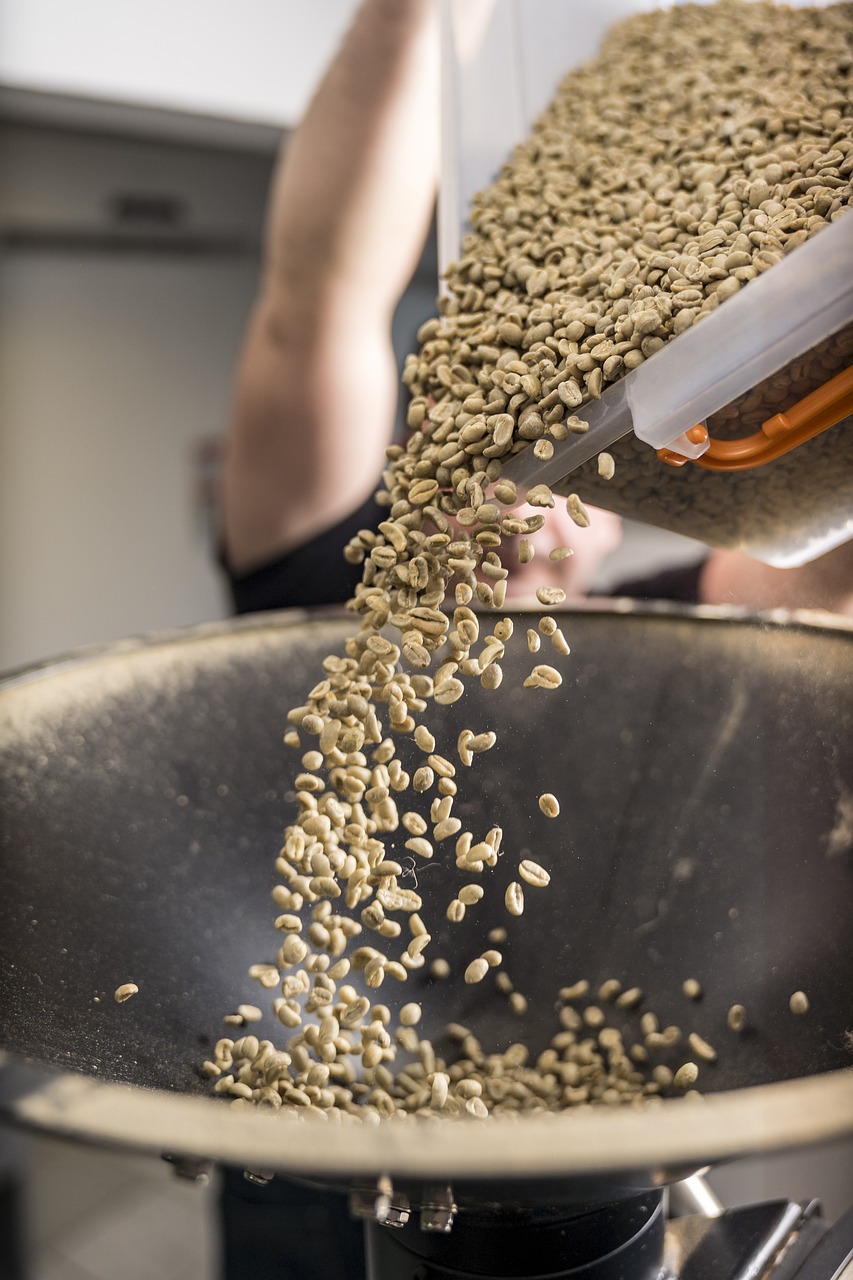
Coffee roasting at home has emerged as a popular trend among coffee aficionados. The idea of transforming raw green coffee beans into aromatic, flavour-packed roasted beans is an enticing process that offers a deeper understanding of coffee and a greater appreciation for each cup. It’s not only a craft but also a rewarding way to customise your coffee’s flavour profile. This post delves into the equipment, techniques, and practical steps to get you started on your coffee roasting journey at home.
1. Why Roast Coffee at Home?
Roasting your own coffee allows you to control every aspect of the roast, from the roast level to the timing, giving you the power to craft your perfect cup. The freshness of home-roasted coffee is unmatched by store-bought beans. Moreover, green beans are often cheaper and have a longer shelf life than roasted beans, making home roasting both economical and sustainable.
2. Essential Equipment for Home Coffee Roasting
Before diving into the roasting process, you need to gather the right tools. The equipment for home roasting ranges from DIY hacks to dedicated roasting machines. Here are the most popular methods and tools:
a. Popcorn Machine
A popcorn air popper is one of the most affordable and accessible ways to roast coffee beans at home. Its design allows hot air to flow through the beans, roasting them evenly. Ensure your popcorn maker is vented from the side, not from below, to prevent the beans from scorching.
b. Skillet or Pan
Roasting coffee in a skillet or pan is a hands-on technique that demands your attention. It’s best suited for small batches, and the process requires constant stirring to achieve even roasting. You’ll need to rely on sight, sound, and smell to monitor the progress of the roast.
c. Home Coffee Roaster
For enthusiasts serious about roasting, investing in a home coffee roaster is a game-changer. These machines provide precise temperature control and roasting profiles, offering consistent results. Popular brands include the Behmor 1600 Plus and the Fresh Roast SR800.
d. Baking Tray
The oven method uses a simple baking tray to roast coffee beans. While it’s less precise and can lead to uneven roasting, it’s a low-cost option for beginners. Spread the beans out evenly on a tray and set the oven to around 230°C (450°F), keeping a close eye on them throughout the process.
e. Grill or BBQ
For those who love outdoor cooking, roasting beans on a BBQ or grill is an adventurous option. Place the beans in a roasting drum or a perforated tray, and keep them moving to ensure they roast evenly.
3. The Coffee Roasting Process
a. Preheat
Regardless of the method, preheating your equipment is crucial. Whether it’s a pan, oven, or popcorn maker, ensure the temperature is at roasting level before adding the beans.
b. First Crack
As the beans heat up, they undergo a transformation. The moisture within them evaporates, and they begin to change colour. Around 5-10 minutes into the roast, you’ll hear the first crack — a sound similar to popcorn popping. This signifies that the beans are moving into the light roast phase.
c. Roast Level
From the first crack, you can decide how long to continue roasting, depending on whether you want a light, medium, or dark roast (discussed in more detail below). Monitoring the temperature and adjusting accordingly is key to achieving the desired roast level.
d. Cooling
After roasting, it’s crucial to cool the beans immediately to prevent over-roasting. A colander works well for this; pour the beans into the colander and shake them to let cool air flow through.
4. Storing Roasted Beans
Once your beans are roasted and cooled, store them in an airtight container away from light and heat. Allow the beans to rest for 24 hours before brewing to let the flavours fully develop.
Roast Level Guide: Light, Medium, and Dark Roasts Explained
The roast level of your coffee beans significantly influences the flavour profile of your brew. Knowing the difference between light, medium, and dark roasts can help you tailor your coffee experience to your taste preferences. Let’s explore these three primary roast levels and the unique characteristics they bring to the table.
1. Light Roast
a. Characteristics
Light roasts are celebrated for their bright, acidic flavours and high caffeine content. They are roasted just past the first crack, preserving the natural origin flavours of the beans. You’ll often find floral, fruity, and citrusy notes in a light roast, with a lighter body and no oil on the surface of the beans.
b. Flavour Profile
Since light roasts maintain the essence of the bean’s origin, the flavours vary depending on where the coffee is grown. African coffees, for example, often yield berry or wine-like notes, while Central American coffees can produce nutty, chocolatey flavours.
c. Best Brewing Methods
Light roasts work best with brewing methods that highlight their delicate flavours, such as pour-over, AeroPress, or Chemex.
2. Medium Roast
a. Characteristics
Medium roasts have a more balanced flavour profile, with a slight reduction in acidity and a fuller body compared to light roasts. The beans are roasted to the middle of the first and second cracks, resulting in a flavour that strikes a balance between the bean’s origin and the roasting process.
b. Flavour Profile
With medium roasts, expect a harmony of sweetness, acidity, and bitterness. The flavours tend to be more caramelised, with hints of chocolate, nuts, and toffee. Medium roasts are a versatile option, making them a popular choice among coffee drinkers.
c. Best Brewing Methods
Medium roast coffee is suitable for a wide variety of brewing methods, including drip coffee makers, French press, and espresso machines.
3. Dark Roast
a. Characteristics
Dark roasts are roasted well into the second crack, giving the beans a deep brown colour and an oily surface. These beans are bold, with a lower acidity and a heavy body. The roasting process dominates the flavour, often muting the origin characteristics of the beans.
b. Flavour Profile
The flavour profile of dark roasts includes notes of dark chocolate, toasted nuts, and smokiness. The bitterness increases with the roast level, and the sweetness becomes more pronounced as sugars in the beans caramelise.
c. Best Brewing Methods
Dark roasts are well-suited for espresso and French press brewing, as their bold flavours can withstand the strong brewing processes.
The Ultimate Guide to Coffee Equipment
Brewing the perfect cup of coffee starts with the right equipment. Whether you’re a casual coffee drinker or a seasoned enthusiast, having the proper tools can elevate your coffee experience. This guide will walk you through the essential and advanced coffee equipment for brewing at home.
1. Grinders
a. Blade Grinders
Blade grinders are an affordable option for grinding coffee beans, but they can produce inconsistent results. They use a spinning blade to chop the beans, which often leads to uneven grind sizes.
b. Burr Grinders
For the best grind consistency, burr grinders are the go-to choice. These grinders use two abrasive surfaces to crush the beans evenly, resulting in uniform grind sizes essential for optimal extraction. Manual burr grinders are great for precision, while electric burr grinders offer convenience.
2. Brewing Devices
a. Pour-Over
The pour-over method involves pouring hot water over coffee grounds in a filter, allowing gravity to extract the coffee slowly. Popular pour-over devices include the Hario V60 and the Chemex. This method gives you control over the brewing time, water temperature, and coffee-to-water ratio.
b. French Press
A French press brews coffee by steeping grounds in hot water before pressing them through a mesh filter. This method produces a full-bodied brew, retaining the coffee’s natural oils for a richer flavour.
c. Espresso Machine
For a concentrated and bold shot of coffee, an espresso machine is essential. Home espresso machines range from manual to fully automated. Semi-automatic machines give you more control over the process, while fully automatic machines do most of the work for you.
d. AeroPress
The AeroPress is a versatile brewing tool that can create a wide variety of coffee styles, from espresso-like shots to a smooth Americano. It’s portable and easy to use, making it a favourite for both home and travel brewing.



